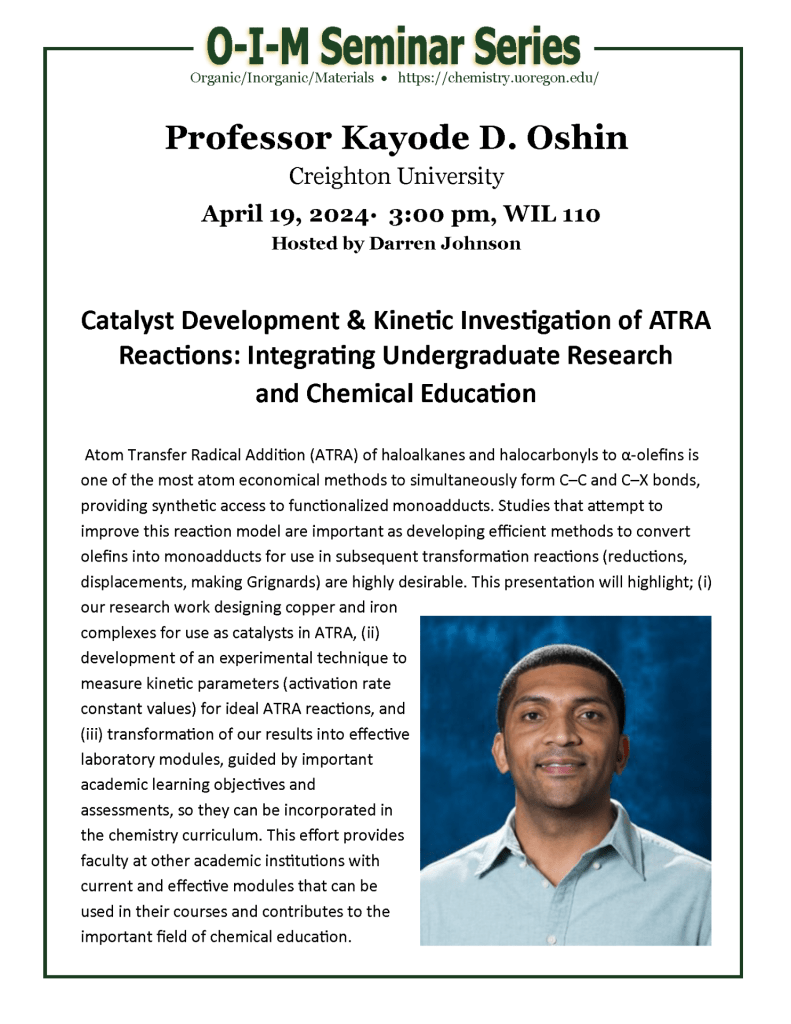 Organic-Inorganic-Materials Chemistry Seminar Series
Organic-Inorganic-Materials Chemistry Seminar Series
Department of Chemistry and Biochemistry
Professor Kayode D. Oshin, Creighton University
April 19, 2024
3:00pm in Willamette Hall, Room 110
Hosted by Darren Johnson
Catalyst Development & Kinetic Investigation of ATRA Reactions: Integrating Undergraduate Research and Chemical Education
Atom Transfer Radical Addition (ATRA) of haloalkanes and halocarbonyls to α-olefins is one of the most atom economical methods to simultaneously form C–C and C–X bonds, providing synthetic access to functionalized monoadducts. Studies that attempt to improve this reaction model are important as developing efficient methods to convert olefins into monoadducts for use in subsequent transformation reactions (reductions, displacements, making Grignards) are highly desirable. This presentation will highlight; (i) our research work designing copper and iron complexes for use as catalysts in ATRA, (ii) development of an experimental technique to measure kinetic parameters (activation rate constant values) for ideal ATRA reactions, and (iii) transformation of our results into effective laboratory modules, guided by important academic learning objectives and assessments, so they can be incorporated in the chemistry curriculum. This effort provides faculty at other academic institutions with current and effective modules that can be used in their courses and contributes to the important field of chemical education.


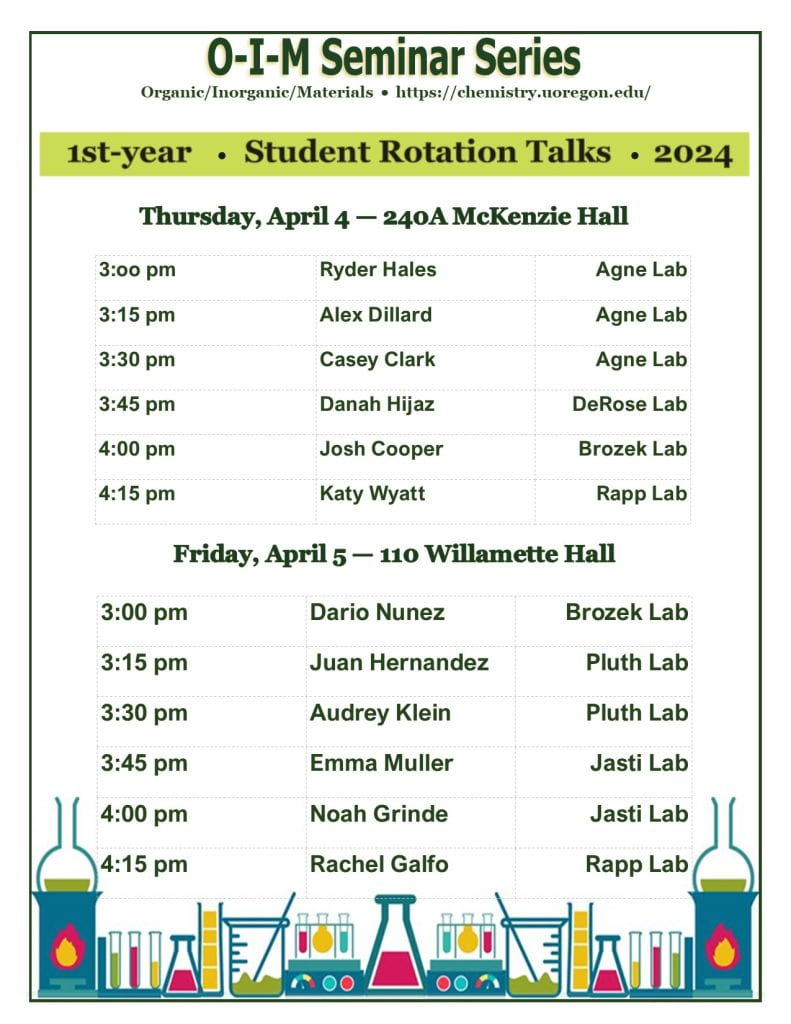 Organic-Inorganic-Materials Seminar Series
Organic-Inorganic-Materials Seminar Series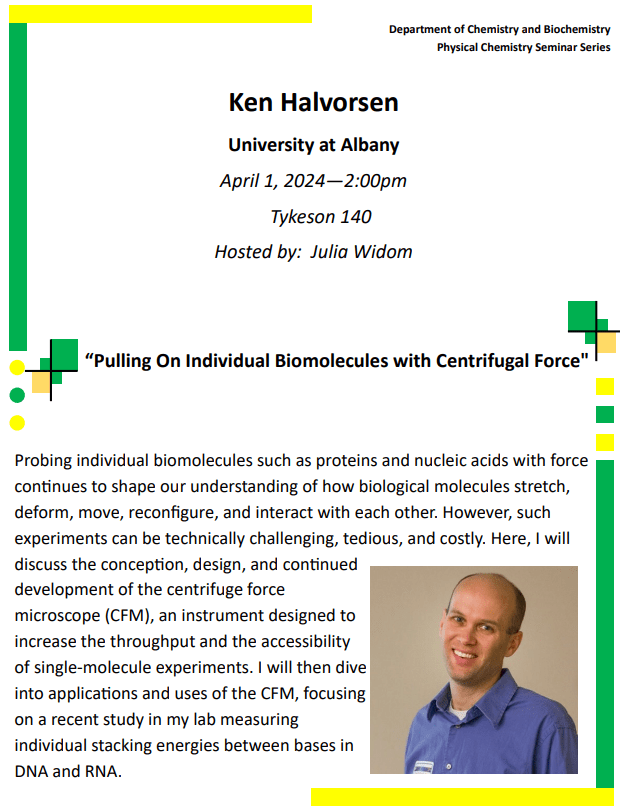



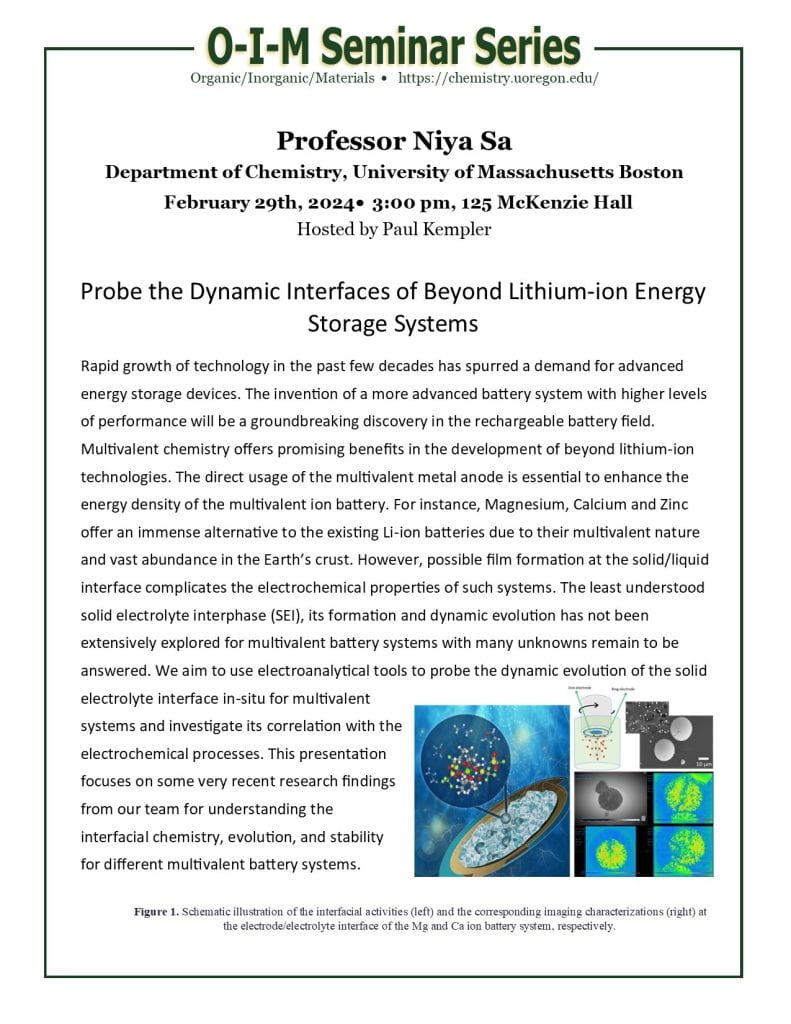
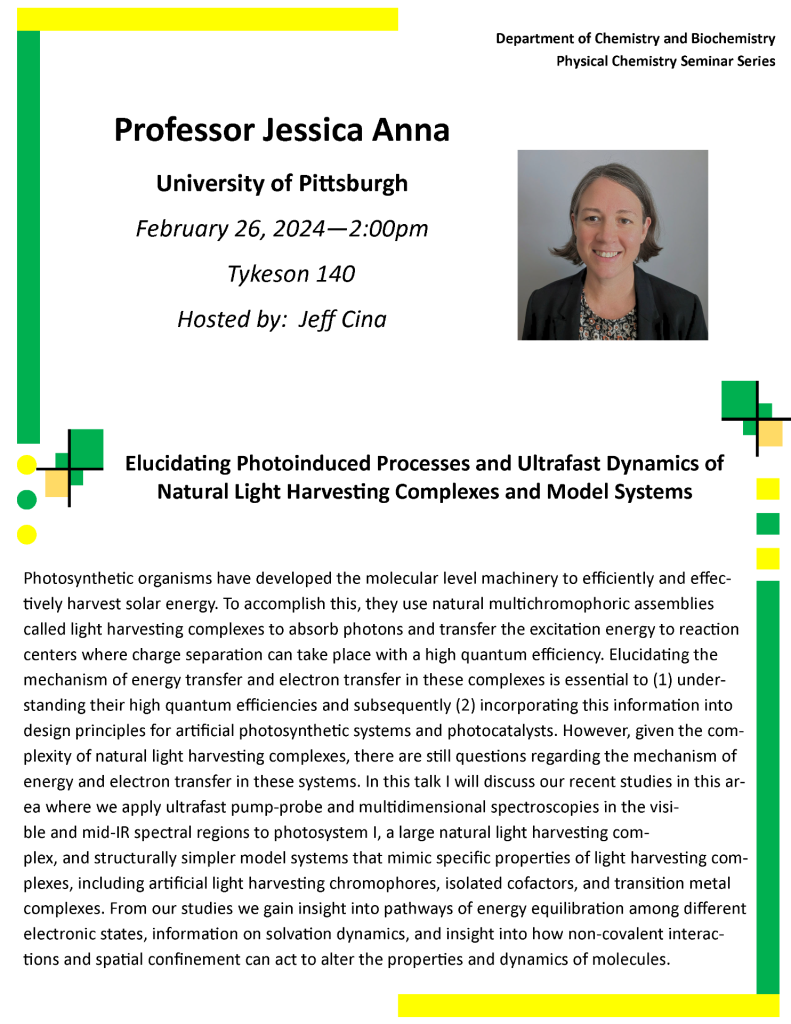
 Department of Chemistry and Biochemistry
Department of Chemistry and Biochemistry